Research & Analysis
U.S. Institute of Peace’s articles, reports, tools and other features provide policy analysis, research findings, and practitioner guides. These publications examine critical conflict issues at the center of the Institute’s work to prevent and resolve violent conflict.
The views expressed in these publications are those of the author(s).
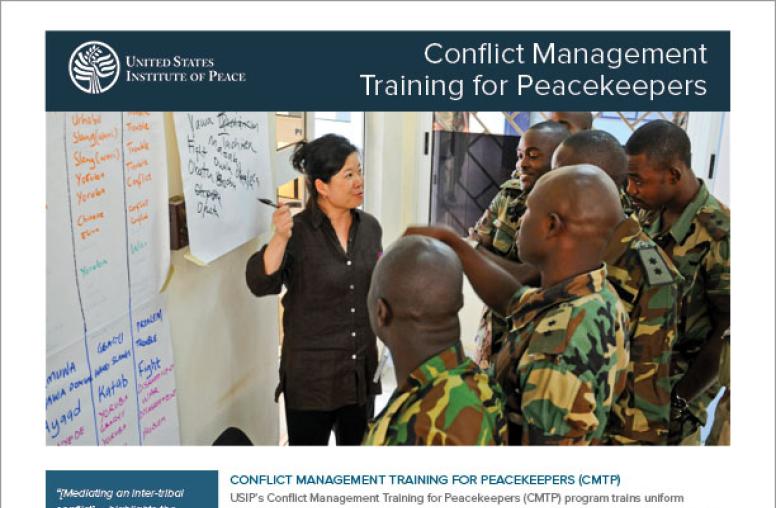
Conflict Management Training for Peacekeepers (CMTP)
USIP’s Conflict Management Training for Peacekeepers (CMTP) program trains uniform members of national militaries who serve in international and regional peacekeeping missions. The training aims to improve mission effectiveness and bolster trust in the mission by focusing on skills and knowledge that enhance professional conduct among troops. The program, which began in 2008, is implemented in partnership with the Department of State’s Global Peace Operations Initiative in the Bureau of Political-Military Affairs.
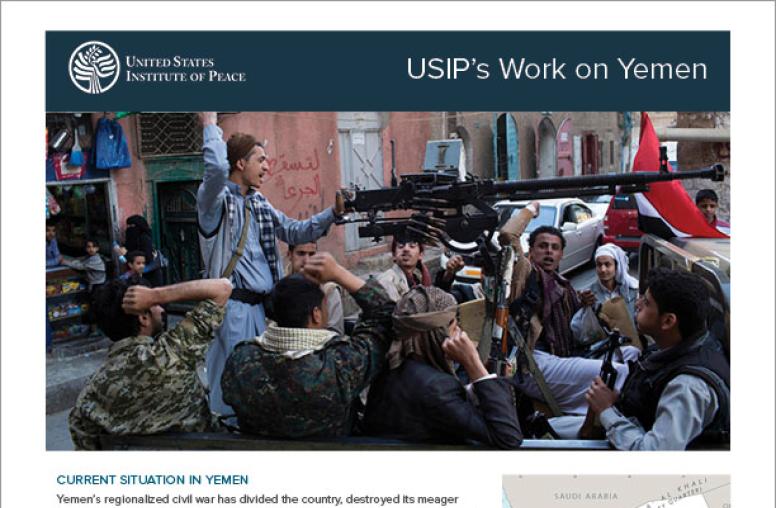
The Current Situation in Yemen
Yemen’s regionalized civil war has divided the country, destroyed its meager infrastructure and created one the worst humanitarian crises in the world. From the start, it has been connected to a regional competition between Saudi Arabia (which has supported the internationally backed Yemeni government) and Iran (which has supported the Houthis). A U.N.-backed truce in 2022 brought relative calm to internal frontlines and, with help from the Sultanate of Oman and Saudi Arabia, the U.N. made progress toward a roadmap agreement to end the war. This progress was upended by the Gaza war in 2023, as the Houthis attacked Israel and international shipping through the Red Sea corridor. Houthi attacks, including on commercial shipping and U.S. naval assets, frayed international support for a peace deal that would see resources flow to the group and have set the country on different trajectory.
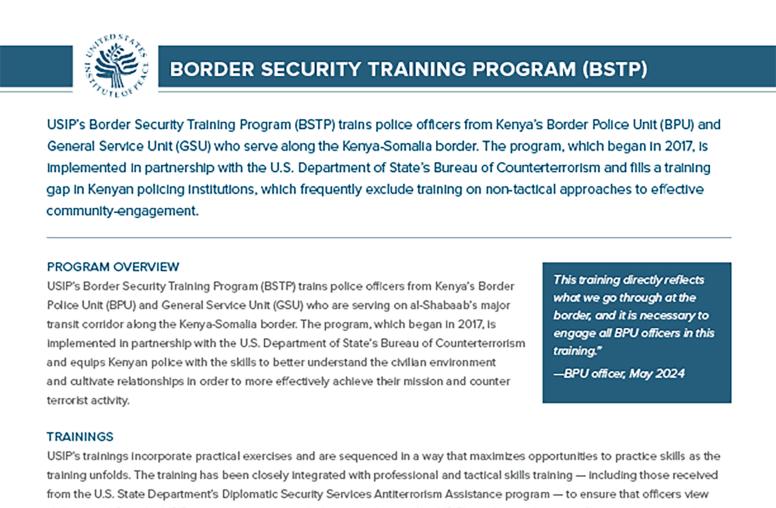
Border Security Training Program (BSTP)
USIP’s Border Security Training Program (BSTP) trains police officers from Kenya’s Border Police Unit (BPU) and General Service Unit (GSU) who are serving on al-Shabaab’s major transit corridor along the Kenya-Somalia border. The program, which began in 2017, is implemented in partnership with the U.S. Department of State’s Bureau of Counterterrorism and equips Kenyan police with the skills to better understand the civilian environment and cultivate relationships in order to more effectively achieve their mission and counter terrorist activity.
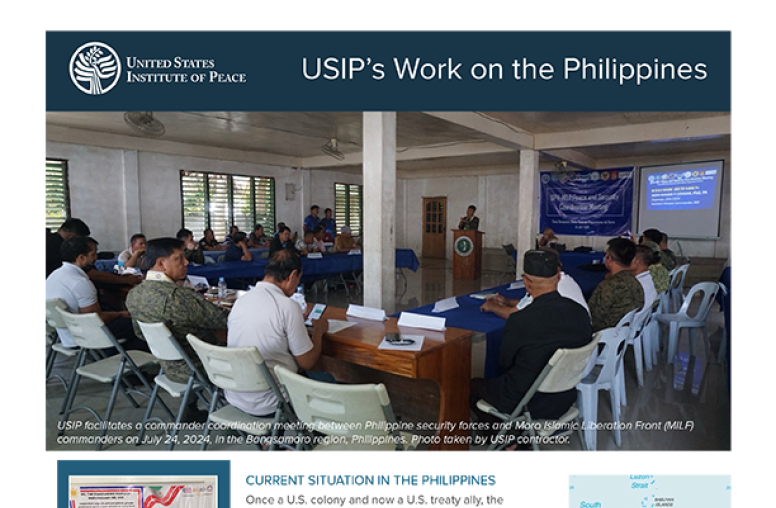
The Current Situation in the Philippines
Once a U.S. colony and now a U.S. treaty ally, the Philippines sits at the heart of geopolitical contestation in East Asia. It is also home to a half-century old internal conflict that has long spawned transnational threats to global security.
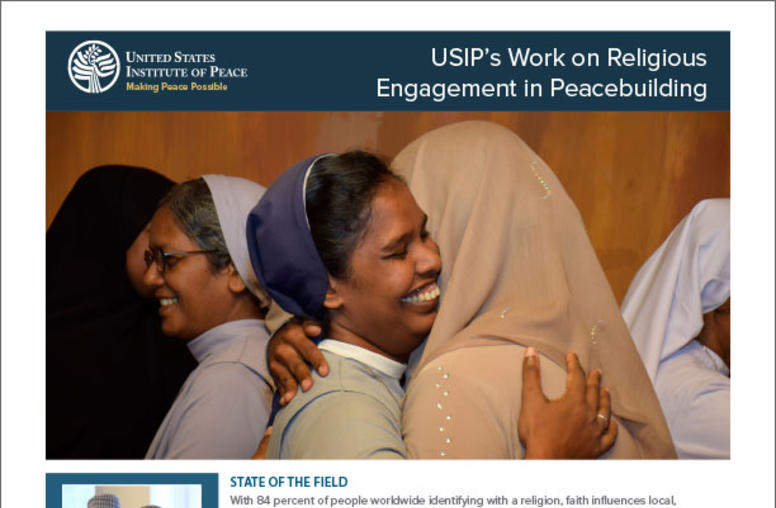
Religious Engagement in Peacebuilding
With 84 percent of people worldwide identifying with a faith tradition, religion influences local, national, and international decision-making. Across the globe, violent extremism often is couched in religious terms, and religious discrimination is on the rise. At the same time, people of faith and religious organizations frequently are on the frontlines of peace efforts, assisting communities affected by violence. Although religious considerations have been marginal to peace efforts historically, governments and peacebuilding organizations increasingly recognize the importance of religion.
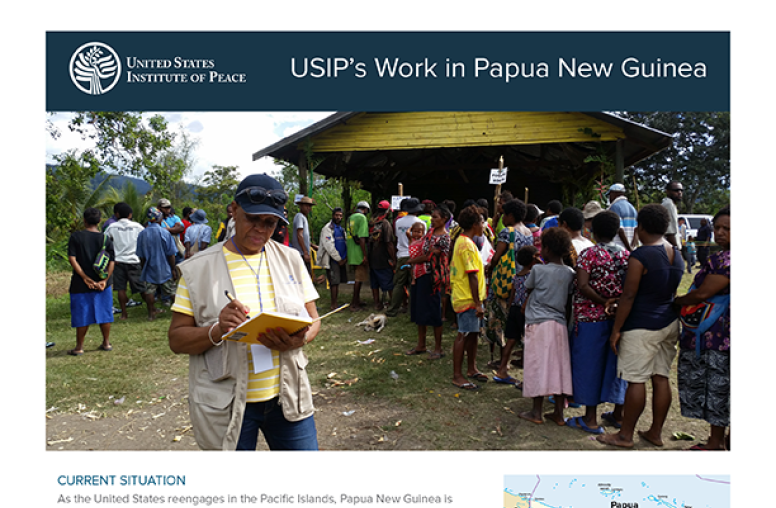
The Current Situation in Papua New Guinea
As the United States reengages in the Pacific Islands, Papua New Guinea is emerging as an increasingly important U.S. partner. It is the region’s largest country, with a landmass about the size of California and a population estimated to be somewhere between 10 and 17 million. In April 2022, Papua New Guinea was designated as one of the focus countries under the U.S. Strategy to Prevent Conflict and Promote Stability (SPCPS). In May 2023, the United States and Papua New Guinea signed a Defense Cooperation Agreement.
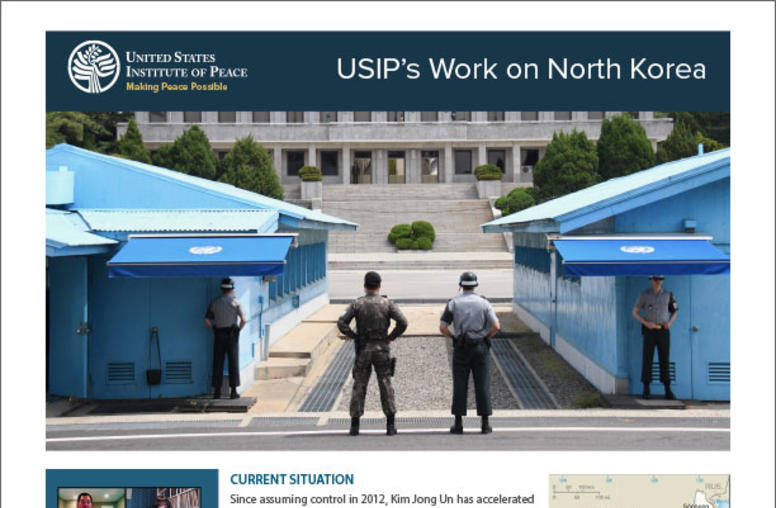
The Current Situation in North Korea
In 2018, reinvigorated diplomacy and reduced tensions generated hope for a more secure and peaceful Korean Peninsula. At a historic summit in Singapore in June, the United States and North Korea committed to establish “new U.S.-DPRK relations” while North Korea also committed to work toward the “complete denuclearization of the Korean Peninsula.” However, the two countries disagreed about what each side should concede and when, leading to a diplomatic failure at a subsequent summit in Hanoi in February 2019. Today, the United States and North Korea coexist in an antagonistic, high-risk stalemate.

The Current Situation in Burma
Following 10 years of gradual progress on political and economic liberalization—and a landslide victory for the NLD in the 2020 election—the Burmese army took power in a coup on February 1, 2021, just hours before the newly elected members of Parliament were set to convene. The army has quickly reversed hard-won progress toward democracy and human rights in Burma. It has arrested elected officials, activists, and journalists, done away with even the most basic civil and political rights, blocked access to social media, and, intermittently, to the internet entirely.
The Current Situation in China
The Institute’s work on China has two primary objectives: preventing violent conflict between the United States and China and countering China’s destabilizing behavior and malign influence in other countries that could potentially draw the United States into a costly war.

The Current Situation in Iraq
Iraq continues to recover from cycles of conflict that have displaced millions of people and caused widespread destruction. As the country rebuilds domestically and reintegrates into the region and the international community, it also needs to improve governance, diversify its economy and address water insecurity, among other challenges. Iraq also continues to grapple with the lasting human legacies of ISIS, including the reintegration of returnees from al-Hol camp in Northeast Syria and internally displaced persons.